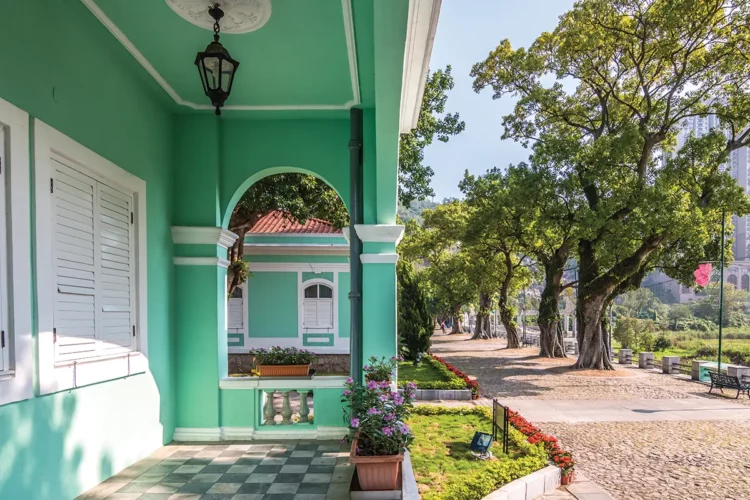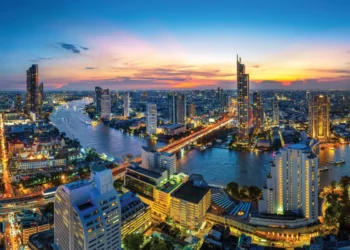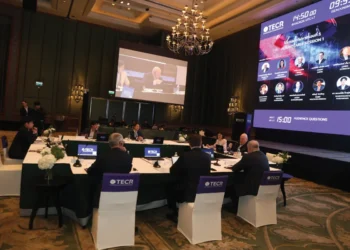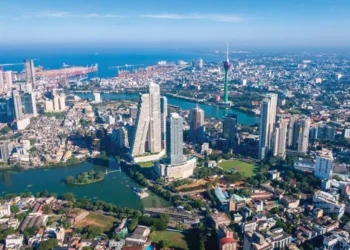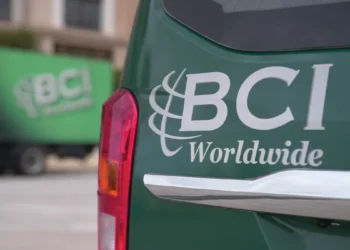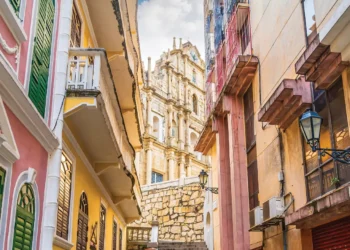Macau’s concessionaires have committed to revitalizing old and dilapidated areas of the city, but there are concerns over how effective some of those efforts have been.
The revitalization project for old districts in Macau began in September 2023, with six concessionaires and the Macau SAR government unveiling their plans to the public.
 Sands China is set to revitalize areas including the Iec Long Firecracker Factory, Pátio da Eterna Felicidade and Rua Das Estalagens and its surrounding areas. Galaxy Entertainment Group will revitalize the Lai Chi Vun Shipyard area; Melco Piers 23 and 25, Rua de Cinco de Outubro and the Inner Harbour area; MGM China the Barra district; SJM Resorts Avenida de Almeida Ribeiro, Pier 16, Pier 14 and the Kam Pek Community Centre; while Wynn will revitalize Rua da Felicidade.
Sands China is set to revitalize areas including the Iec Long Firecracker Factory, Pátio da Eterna Felicidade and Rua Das Estalagens and its surrounding areas. Galaxy Entertainment Group will revitalize the Lai Chi Vun Shipyard area; Melco Piers 23 and 25, Rua de Cinco de Outubro and the Inner Harbour area; MGM China the Barra district; SJM Resorts Avenida de Almeida Ribeiro, Pier 16, Pier 14 and the Kam Pek Community Centre; while Wynn will revitalize Rua da Felicidade.
After a year of development, the preliminary results of the revitalization plan are visible, with the concessionaires initiating various activities in these areas. Wynn took the lead by introducing a pedestrian street plan on Rua da Felicidade, altering the flow of pedestrians, while GEG has transformed the Lai Chi Vun Shipyard into a hub for cultural and creative industries.
 SJM Resorts has transformed the Kam Pek Community Centre into a gourmet plaza and, in cooperation with Sofitel Macau at Ponte 16, plans more non-gaming elements and the revitalization of Macau Palace. Additionally, Sands China has launched a small and medium enterprises entrepreneurship program on Rua das Estalagens, providing investment support for businesses in the area.
SJM Resorts has transformed the Kam Pek Community Centre into a gourmet plaza and, in cooperation with Sofitel Macau at Ponte 16, plans more non-gaming elements and the revitalization of Macau Palace. Additionally, Sands China has launched a small and medium enterprises entrepreneurship program on Rua das Estalagens, providing investment support for businesses in the area.
However, while the old district revitalization plan has indeed breathed new life into some areas that were gradually fading, the effectiveness of certain parts of the plan has been called into question. For instance, after Rua da Felicidade was transformed into a pedestrian area, it faced opposition from local businesses within a year, who reported a decrease rather than an increase in business. Eventually, reducing the extent and operating hours of the pedestrian area resolved the issue.
During a Legislative Assembly (AL) meeting in early December, many members raised concerns about the effectiveness of the revitalization projects. AL member Lei Cheng I
questioned the current status of investments and project implementation in the six major areas and their impact on community economic development and environmental improvements in those areas.
 In response, the former Secretary for Social Affairs and Culture, Ao Ieong U – who stepped down on 20 December – cited data showing that in the year since the revitalization efforts began, about 750 cultural performances were held, providing opportunities for over 200 entities and attracting more than 1.7 million visitors during the events.
In response, the former Secretary for Social Affairs and Culture, Ao Ieong U – who stepped down on 20 December – cited data showing that in the year since the revitalization efforts began, about 750 cultural performances were held, providing opportunities for over 200 entities and attracting more than 1.7 million visitors during the events.
AL member Lam U Tou, who has long focused on the revitalization projects, believes that while the initiatives to revitalize old districts are generally supported for promoting non-gaming development, there are reservations about their transparency, public right to information and effectiveness.
“The effects of revitalizing old districts are there, but whether they are significant remains to be seen, as the public does not know the cost involved in these projects, making it difficult to assess their value for money,” he stated.
 “If the details are not made public, it is not beneficial for anyone. Currently, it is hard for society to know if the revitalization plans are truly being implemented effectively to create a multiplier effect, rather than just being spent without meaningful outcomes.”
“If the details are not made public, it is not beneficial for anyone. Currently, it is hard for society to know if the revitalization plans are truly being implemented effectively to create a multiplier effect, rather than just being spent without meaningful outcomes.”
Former Macau Chief Executive Ho Iat Seng once mentioned in the AL that “whether it is the revitalization plan for the six major districts or the investment plan for non-gaming elements, it is not a one-year success, but is planned for a duration of 10 years.”
Lam acknowledged the Chief Executive’s point about waiting 10 years for results but expressed disappointment with the actual progress in some areas.
 “If the public had access to more detailed information, or if the government could disclose more details of the revitalization plans, the progress would be more in line with development needs,” he said.
“If the public had access to more detailed information, or if the government could disclose more details of the revitalization plans, the progress would be more in line with development needs,” he said.
Macau’s new Chief Executive, Sam Hou Fai, officially took office on 20 December, but his policy agenda did not mention the old district revitalization plan.
Lam hopes the new administration will adopt more open and transparent policy measures in this area.
“Although the new Chief Executive has not previously mentioned this, the future plan may change,” he said. “I hope that future plans will not use a planned economy approach to drive the development of the real economy.”






